Installing solar systems is more than just a job; it involves a deep understanding of numerous Australian standards and guidelines. Among these, AS3000 – The Australian Wiring Rules – stands out as the master standard for electrical work. Among a zillion other things, it mandates that all equipment installations adhere to the manufacturer’s instructions.
Despite our best efforts and expertise, it’s easy to overlook some of these manufacturer guidelines given the wide variety of brands and models installed whether they be solar panels, inverters or home batteries.
With that understanding, I’ve compiled a list of the most frequent mistakes I see related to following the instructions. My aim is to shed light on these areas, offering a helping hand to my fellow professionals in their quest for faultless solar installations.
Mistake #1 Panel Clamping Zones
It’s crucial to carefully plan where your solar rails will go so that your solar panel the clamps are in the correct place. Too close to the panel edges or too central and you’re risking the panel’s integrity, your panels might flex too much in the wind, or even worse lift off the roof altogether.
The key is following the manufacturer’s ‘Clamping Zone’ guidelines to the letter to avoid unnecessary damage or a an unscheduled solar disassembly in high winds.
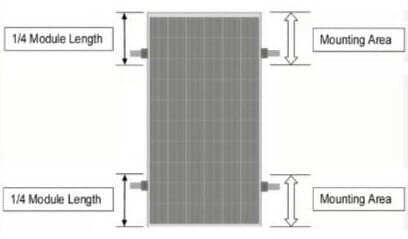
Direct from the Trina installation manual.
Mistake #2 Tile Feet Fixings
When it comes to securing your solar setup on a tiled roof, the instructions will warn you that one screw just doesn’t cut it. Double down with two, ensuring they’re appropriately spaced according to the wind region specifications laid out by the manufacturer. It’s not just about passing inspections; it’s about providing stability and peace of mind, ensuring that your installation stays put come rain, wind, or shine.
Mistake #3 Inverter Clearance Zones
Solar inverters work hard and need breathing room. These devices can get as hot as a summer BBQ when they’re converting solar energy into usable power. Make sure there’s enough clearance around them for proper airflow. Pay attention to the specific requirements of different brands and models; it’s not a one-size-fits-all situation. And watch out for those eaves – hanging an inverter too high is a recipe for performance hiccups – waste-heat rises.
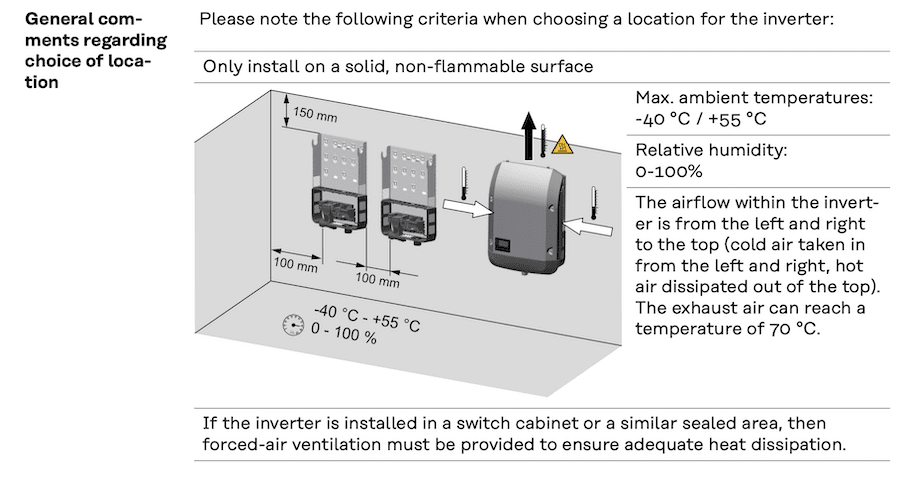
Clear Fronius Primo installation instructions.
Mistake #4 Inverter Mounting
Mounting an inverter isn’t just about slapping it onto a surface and calling it a day. It’s about ensuring it’s attached to the right material, set at the correct angle, and securely fastened with locking screws (or whatever hardware the manufacturer’s instructions insists on). The consequences of cutting corners can be dire – from failed inspections to an inverter crashing down unexpectedly.
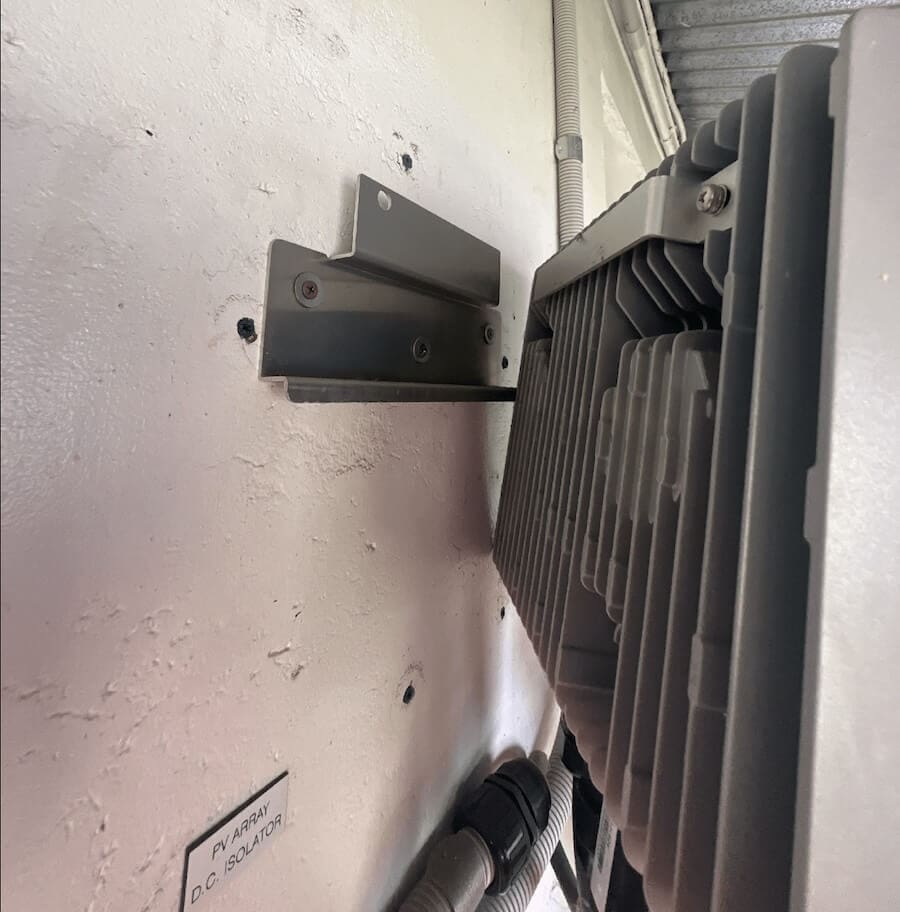
The inverter was not fixed to the bracket as per manufacturer’s instructions.
Mistake #5 Inverter Positioning
Direct sunlight is no friend to solar inverters. Even if the instructions don’t outright ban a sunny spot, no manufacturer will send you a thank-you note for cooking their equipment. The efficiency and lifespan of inverters can plummet under the harsh sun so even if the manual doesn’t scream it from the rooftops, consider it a rule of thumb – keep inverters out of direct sunlight.
It doesn’t help when diagrams resemble abstract art more than helpful guides:
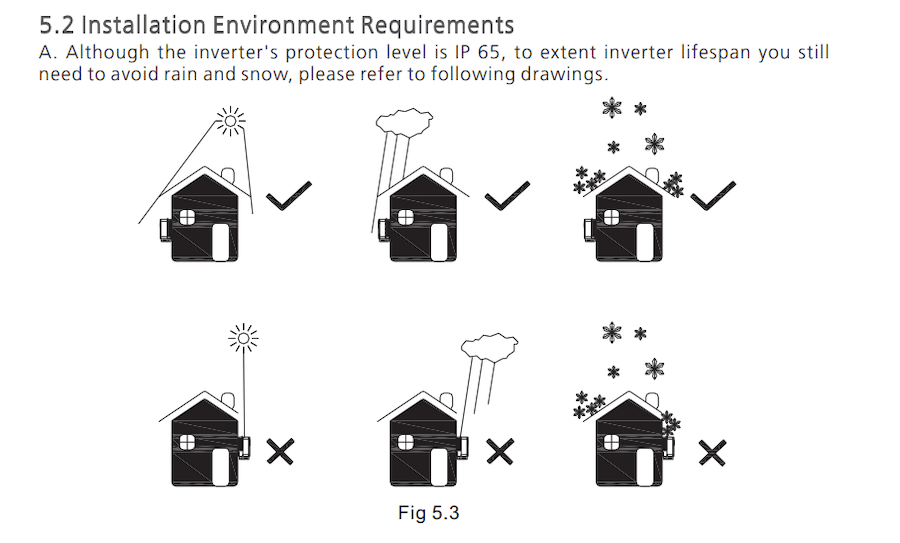
From a Growatt installation manual.
What should you do if the manufacturer’s instructions aren’t clear?
So, what’s an installer to do when faced with an ambiguous or unclear manual? First off, don’t go it alone. Reach out for clarity. A respectable manufacturer should not only have Australian representation but also be accessible and ready to translate tech-speak into human. If you find yourself being ping-ponged to overseas offices, it’s worth asking: is this the right hardware partner for my solar installations?
The best manufacturers understand this; they’re not just shipping boxes and calling it a day. They’re here, boots on the ground, offering training, support, and updating their instructions as products and standards evolve. They invest in the local market, and by extension, local installers.

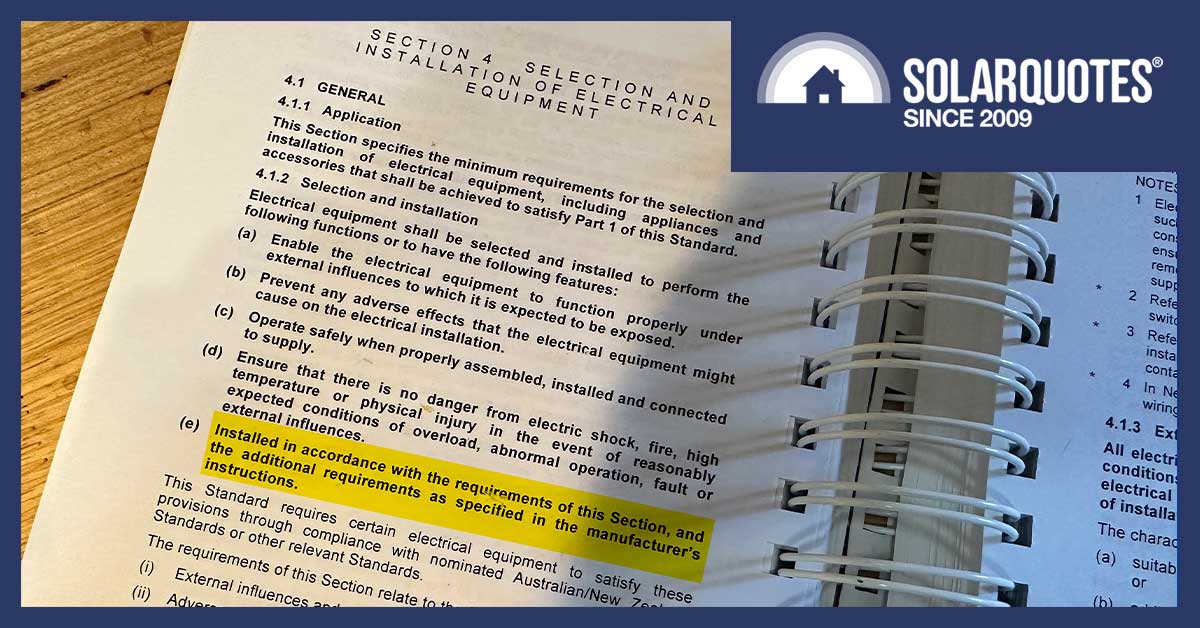
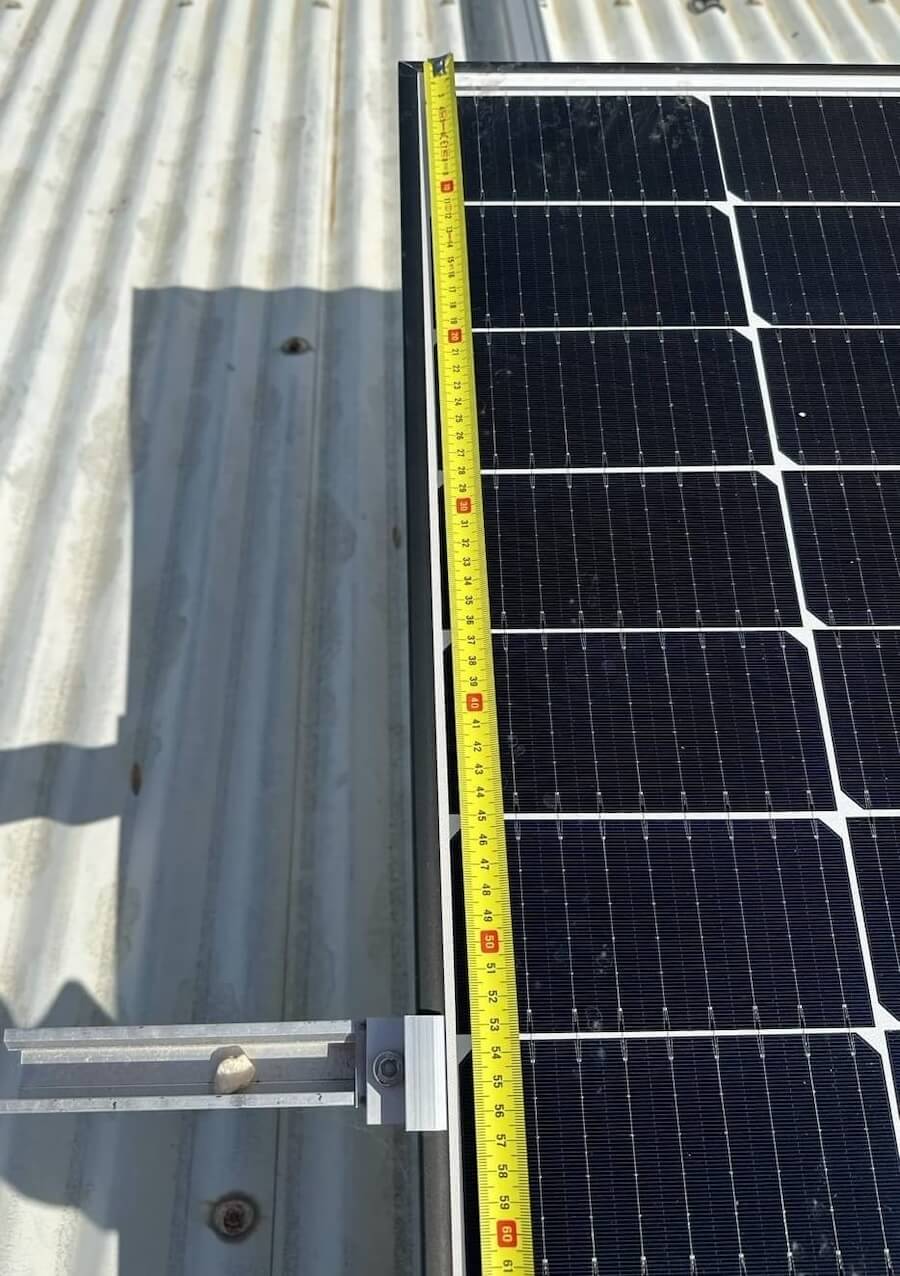
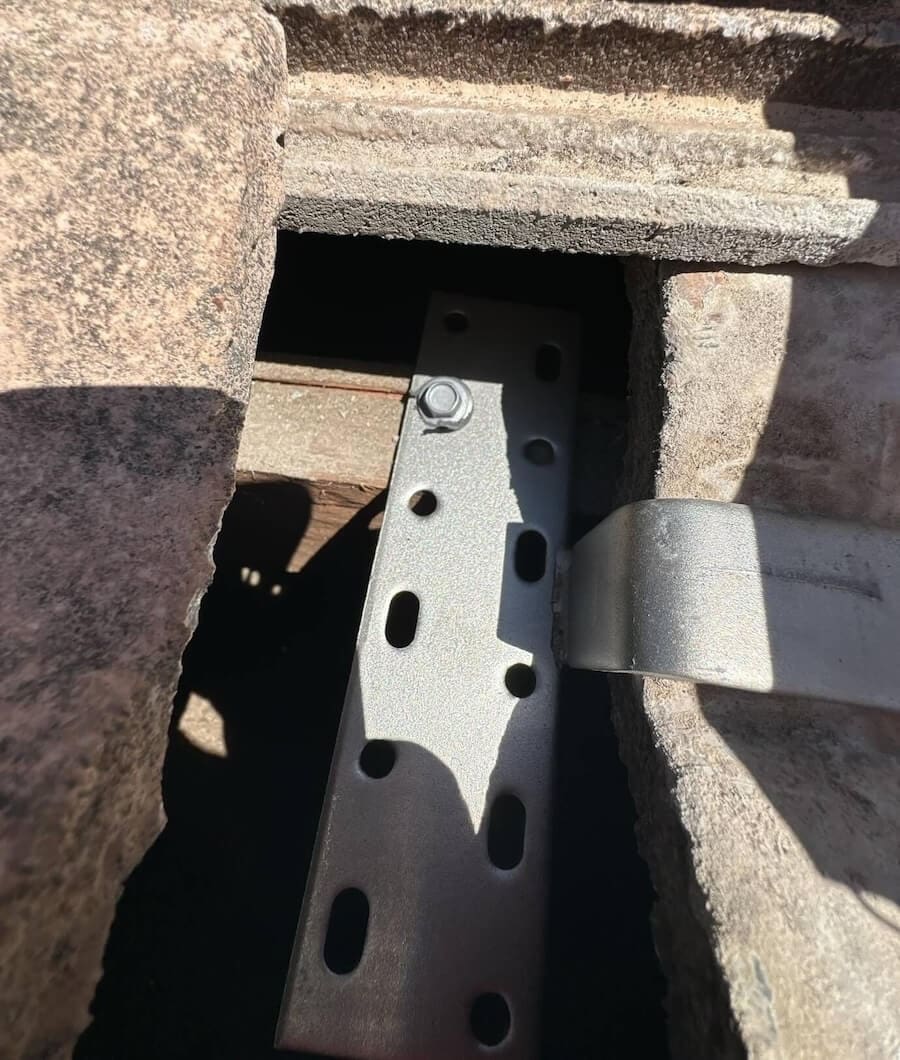
 RSS - Posts
RSS - Posts



Great read for new solar owners, too – thanks Pat!
I’d love to see your version of ‘top ten red flags new solar owners should look for during or after the install’
After a solar panel installation I followed your directions and found he ha checked for continuity during the day and night and found all power switched off. I also checked at night for blackouts and found the same thing happened. Being present during the mains wiring I noted he had inserted all incoming wires into the main switch instead of connecting the inverter wires into the house circuit. Am I correct in my assumption or, is there a Australian Standard that states this is the correct wiring connection, then my purchasing a solar system to offset any blackouts that may occur.
There is also the problem of our system generating more power than required, yet we are still downloading power from the grid. This does not seem feasible as we have a two 2.9 Kw batteries as backup.
Could you advise us of the answer to this problem as the installer, when contacted, states that he wired the system correctly.
Sorry Roy,
It’s a bit hard to diagnose from here. Please feel free to email us with some photos or other details, if it’s a quote furnished through us then we’re happy to help or we can get you an independent inspection to diagnose.
Thank you Anthony. I guess my previous email was confusing, so I will try to explain in point form.
1. Day time. Switched off main switch and found all power off through out the house.
2. Night Time. Repeated the process with the same results.
As we have a total 9.7Kw solar system and a total 5.8Kw battery system should there not be continuous power once the grid is isolated??
When the solar installer wired our system into the grid it appears he connected the panels and battery into the main switch. This raises the question, is there a Australian Standard for wiring solar panels and batteries as the current wiring defeats the purpose of a solar system in the event of blackouts??
Hi Roy,
We’d need to know more about your particular hardware but some hybrid battery setups don’t have the “blackout protection” capability built in, they need some additional hardware &/or wiring to enable it. ie SolarEdge & older Sungrows need a “backup box” installed. Some Fronius & GoodWe require a paid firmware upgrade.
In any case your installer should have explained the operation and shown you before they left site. Have you spoken to them?
Cheers